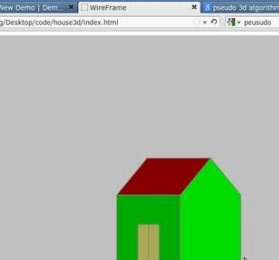WSDL文件详解(转贴)中_.NET教程_编程技术
2013-12-20 14:26:54
[小 大]
已经帮助:人解决问题
详解
WSDL �型��息�段中的 XML ��描述WSDL 的�料�型,是根�目前 W3C Recommendation 的「XML Schema: Datatypes」(XSD)。此文件共有三�不同的版本 (1999、2000/10、� 2001),若欲指定特定 WSDL �案所使用的版本,�在 <definitions> 元素中,�其宣告�命名空�的�性。方法如下:
xmlns:xsd="http://www.w3.org/2001/XMLSchema"
本文�以 2001 版�考量。WSDL ��的��者,也大力建�使用 2001 版。
在本��後�章�中,�用的字首或命名空�速�法如下:
字首 ��的命名空� �明
soapenc http://schemas.xmlsoap.org/soap/encoding SOAP 1.1 ��
wsdl http://schemas.xmlsoap.org/wsdl/soap WSDL 1.1
xsd http://www.w3.org/2001/XMLSchema XML Schema
XSD 基本�型
下表直接取自 MSTK2 文件,列�了 MSTK2 支援的所有 XSD 基本�型。�表�明,位於客�端�伺服端的 WSDL �者,如何在 VB、C++、� IDL 中,� XSD �型��至不同��等的�型。
XSD (Soap) �型 不同的�型 VB C++ IDL �解
anyURI VT_BSTR String BSTR BSTR
base64Binary VT_ARRAY | VT_UI1 Byte() SAFEARRAY SAFEARRAY(unsigned char)
boolean VT_BOOL Boolean VARIANT_BOOL VARIANT_BOOL
byte VT_I2 Integer short short �������。
date VT_DATE Date DATE DATE ���� oo:oo:oo
dateTime VT_DATE Date DATE DATE
double VT_R8 Double double double
duration VT_BSTR String BSTR BSTR 不�行��或��
ENTITIES VT_BSTR String BSTR BSTR 不�行��或��
ENTITY VT_BSTR String BSTR BSTR 不�行��或��
float VT_R4 Single float float
gDay VT_BSTR String BSTR BSTR 不�行��或��
gMonth VT_BSTR String BSTR BSTR 不�行��或��
gMonthDay VT_BSTR String BSTR BSTR 不�行��或��
gYear VT_BSTR String BSTR BSTR 不�行��或��
gYearMonth VT_BSTR String BSTR BSTR 不�行��或��
ID VT_BSTR String BSTR BSTR 不�行��或��
IDREF VT_BSTR String BSTR BSTR 不�行��或��
IDREFS VT_BSTR String BSTR BSTR 不�行��或��
int VT_I4 long long long
integer VT_DECIMAL Variant DECIMAL DECIMAL �������。
language VT_BSTR String BSTR BSTR 不�行��或��
long VT_DECIMAL Variant DECIMAL DECIMAL �������。
Name VT_BSTR String BSTR BSTR 不�行��或��
NCName VT_BSTR String BSTR BSTR 不�行��或��
negativeInteger VT_DECIMAL Variant DECIMAL DECIMAL �������。
NMTOKEN VT_BSTR String BSTR BSTR 不�行��或��
NMTOKENS VT_BSTR String BSTR BSTR 不�行��或��
nonNegativeInteger VT_DECIMAL Variant DECIMAL DECIMAL �������。
nonPositiveInteger VT_DECIMAL Variant DECIMAL DECIMAL �������。
normalizedString VT_BSTR String BSTR BSTR
NOTATION VT_BSTR String BSTR BSTR 不�行��或��
number VT_DECIMAL Variant DECIMAL DECIMAL
positiveInteger VT_DECIMAL Variant DECIMAL DECIMAL �������。
QName VT_BSTR String BSTR BSTR 不�行��或��
short VT_I2 Integer short short
string VT_BSTR String BSTR BSTR
time VT_DATE Date DATE DATE Day �定成 1899 年 12 月 30 日
token VT_BSTR String BSTR BSTR 不�行��或��
unsignedByte VT_UI1 Byte unsigned char unsigned char
unsignedInt VT_DECIMAL Variant DECIMAL DECIMAL �������。
unsignedLong VT_DECIMAL Variant DECIMAL DECIMAL �������。
unsignedShort VT_UI4 long long long �������。
XSD 定����建的�料�型:基本�型�衍生�型。若需�一步��,可前往 http://www.w3.org/TR/2001/PR-xmlschema-2-20010330,���建�型的��架�。
���型
XML Schema 可定����型,也就是 C 中的 struct。例如,下列 C struct 的相�定�方式�:
typedef struct {
string firstName;
string lastName;
long ageInYears;
float weightInLbs;
float heightInInches;
} PERSON;
若使用 XML Schema 可以撰�成:
<xsd:complexType name="PERSON">
<xsd:sequence>
<xsd:element name="firstName" type="xsd:string"/>
<xsd:element name="lastName" type="xsd:string"/>
<xsd:element name="ageInYears" type="xsd:int"/>
<xsd:element name="weightInLbs" type="xsd:float"/>
<xsd:element name="heightInInches" type="xsd:float"/>
</xsd:sequence>
</xsd:complexType>
不�,<complexType> 所能表示的,�不�止於 struct 的��而已。除了 <sequence> 之外,它�可以有其它的子元素。若不用 <sequence>,也可以使用 <all>:
<xsd:complexType name="PERSON">
<xsd:all>
<xsd:element name="firstName" type="xsd:string"/>
<xsd:element name="lastName" type="xsd:string"/>
<xsd:element name="ageInYears" type="xsd:int"/>
<xsd:element name="weightInLbs" type="xsd:float"/>
<xsd:element name="heightInInches" type="xsd:float"/>
</xsd:all>
</xsd:complexType>
其意��是,成��� <element> 可以任何�序�入,且每一�都具有��性。��便� C struct 的使用方式不同了。
�注意�例中,string (字串)、int (整�)、float (浮��) 等�建�料�型的使用方式。C 的字串在 XML 中也是字串,且浮���是浮��。但 C 的 long (�整�),在 XML �是 int (��考上表)。
在 WSDL �案中,Types �段是宣告上述���型的位置。例如,PERSON �型可以下列方式宣告,��其用於 Messages �段中:
<?xml version="1.0" encoding="UTF-8" ?>
<definitions ?>
<types>
<schema targetNamespace="someNamespace"
xmlns:typens="someNamespace" >
<xsd:complexType name="PERSON">
<xsd:sequence>
<xsd:element name="firstName" type="xsd:string"/>
<xsd:element name="lastName" type="xsd:string"/>
<xsd:element name="ageInYears" type="xsd:int"/>
<xsd:element name="weightInLbs" type="xsd:float"/>
<xsd:element name="heightInInches" type="xsd:float"/>
</xsd:sequence>
</xsd:complexType>
</schema>
</types>
<message name="addPerson">
<part name="person" type="typens:PERSON"/>
</message>
<message name="addPersonResponse">
<part name="result" type="xsd:int"/>
</message>
</definitions>
在上述的�例中,第一��息的名�是「addPerson」,它有��型�「PERSON」的 <part>。在 Types �段中,�型 PERSON �被宣告����型。
起始 MSTK2 SoapClient �,若在上述片段使用完整的 WSDL �案,它便可成功地剖析��案。不�,它�是不能�函�呼叫,�送至 <addPerson>。�是因� SoapClient 本身不知道如何�理���型;它需要自�的�型��器 (mapper) 才能�理���型。在 MSTK2 文件中有一��例�用程式,它含有自�的�型��器。
另外�有一�方法,可� <part> 元素,��至�型宣告。��方法使用的是元素,而非�型�性。下��例�在 Types �段中,先宣告��元素 (「Person」�「Gender」);然後在「addPerson」的 <message> 中,再使用元素�性�照它�。
<?xml version="1.0" encoding="UTF-8" ?>
<definitions ?>
<types>
<schema targetNamespace="someNamespace"
xmlns:typens="someNamespace" >
<element name="Person">
<xsd:complexType>
<xsd:sequence>
<xsd:element name="firstName" type="xsd:string"/>
<xsd:element name="lastName" type="xsd:string"/>
<xsd:element name="ageInYears" type="xsd:int"/>
<xsd:element name="weightInLbs" type="xsd:float"/>
<xsd:element name="heightInInches" type="xsd:float"/>
</xsd:sequence>
</xsd:complexType>
</element>
<element name="Gender">
<xsd:simpleType>
<xsd:restriction base="xsd:string">
<xsd:enumeration value="Male" />
<xsd:enumeration value="Female" />
</xsd:restriction>
</xsd:simpleType>
</element>
</schema>
</types>
<message name="addPerson">
<part name="who" element="typens:Person"/>
<part name="sex" element="typens:Gender"/>
</message>
<message name="addPersonResponse">
<part name="result" type="xsd:int"/>
</message>
</definitions>
在 Types �段的 Gender <element> 中,�嵌著一�匿名的列��型,其值可以是「Male」或「Female」。然後在「addPerson」的 <message> 中,再使用元素�性 (不用�型�性) �照�元素。
若欲��特定�型至 <part>,使用「元素」�「�型」�性有何不同?若使用「�型」�性,part 可描述成能�取���型 (就像��一�);但若使用「元素」�性,便不能��做。��考下列�例的�明。
<?xml version="1.0" encoding="UTF-8" ?>
<definitions ?>
<types>
<schema targetNamespace="someNamespace"
xmlns:typens="someNamespace">
<xsd:complexType name="PERSON">
<xsd:sequence>
<xsd:element name="firstName" type="xsd:string"/>
<xsd:element name="lastName" type="xsd:string"/>
<xsd:element name="ageInYears" type="xsd:int"/>
<xsd:element name="weightInLbs" type="xsd:float"/>
<xsd:element name="heightInInches" type="xsd:float"/>
</xsd:sequence>
</xsd:complexType>
<xsd:complexType name="femalePerson">
<xsd:complexContent>
<xsd:extension base="typens:PERSON" >
<xsd:element name="favoriteLipstick" type="xsd:string" />
</xsd:extension>
</xsd:complexContent>
</xsd:complexType>
<xsd:complexType name="malePerson">
<xsd:complexContent>
<xsd:extension base="typens:PERSON" >
<xsd:element name="favoriteShavingLotion" type="xsd:string" />
</xsd:extension>
</xsd:complexContent>
</xsd:complexType>
<xsd:complexType name="maleOrFemalePerson">
<xsd:choice>
<xsd:element name="fArg" type="typens:femalePerson" >
<xsd:element name="mArg" type="typens:malePerson" />
</xsd:choice>
</xsd:complexType>
</schema>
</types>
<message name="addPerson">
<part name="person" type="typens:maleOrFemalePerson"/>
</message>
<message name="addPersonResponse">
<part name="result" type="xsd:int"/>
</message>
</definitions>
此�例也�明了副�名的衍生用法。「femalePerson」�「malePerson」�者,都是衍生自「PERSON」。它�都各有一��外的元素:「femalePerson」的「favoriteLipstick」以及「malePerson」的「favoriteShavingLotion」。使用 <choice> 的 construct,���衍生�型又可�合成一����型「maleOrFemalePerson」。最後,在「addPerson」的 <message> 中,此�合�型又可供「person」的 <part> �照。而此 <part> 或��,可以是「femalePerson」或「malePerson」。
�列
XSD 可提供 <list> construct,以宣告空白所分隔的�目�列。但是,SOAP �不使用 XSD 清���列��;而是��列定�自己的�型,即「SOAP-ENC:Array」。下列�例�明,如何��一�度的整��列,依其法��出此��型:
<xsd:complexType name="ArrayOfInt">
<xsd:complexContent>
<xsd:restriction base="soapenc:Array">
<attribute ref="soapenc:arrayType" wsdl:arrayType="xsd:int[]"/>
</xsd:restriction>
</xsd:complexContent>
</xsd:complexType>
只要使用�出限制的方式,即可� soapenc:Array 宣告新的���型。接著便可宣告此���型的�性:arrayType。�照「soapenc:arrayType」��上即是 arrayType �性的宣告,其方式如下:
<xsd:attribute name="arrayType" type="xsd:string"/>
然後,wsdl:arrayType �性值,可�定每��列成�的�型。�列�目也可以是���型:
<xsd:complexType name="ArrayOfPERSON">
<xsd:complexContent>
<xsd:restriction base="soapenc:Array">
<attribute ref="soapenc:arrayType"
wsdl:arrayType="typens:PERSON[]"/>
</xsd:restriction>
</xsd:complexContent>
</xsd:complexType>
WSDL 的要求是,�列的�型名�必�是,「ArrayOf」��列�目�型的的串� (concatenation)。也因此,��名�即可得知,「ArrayOfPERSON」是 PERSON struct 的�列。在下例中,只要使用 ArrayOfPERSON 宣告一� <message>,即可新增多� PERSON:
<?xml version="1.0" encoding="UTF-8" ?>
<definitions ?>
<types>
<schema targetNamespace="someNamespace"
xmlns:typens="someNamespace" >
<xsd:complexType name="PERSON">
<xsd:sequence>
<xsd:element name="firstName" type="xsd:string"/>
<xsd:element name="lastName" type="xsd:string"/>
<xsd:element name="ageInYears" type="xsd:int"/>
<xsd:element name="weightInLbs" type="xsd:float"/>
<xsd:element name="heightInInches" type="xsd:float"/>
</xsd:sequence>
</xsd:complexType>
<xsd:complexType name="ArrayOfPERSON">
<xsd:complexContent>
<xsd:restriction base="soapenc:Array">
<attribute ref="soapenc:arrayType"
wsdl:arrayType="typens:PERSON[]"/>
</xsd:restriction>
</xsd:complexContent>
</xsd:complexType>
</schema>
</types>
<message name="addPersons">
<part name="person" type="typens:ArrayOfPERSON"/>
</message>
<message name="addPersonResponse">
<part name="result" type="xsd:int"/>
</message>
</definitions>
<portType> � <operation> 元素
PortType 可在抽象中,定�多�作�。PortType 中的作�元素,可定�呼叫所有 PortType 方法的�法。每�作�元素都�宣告,方法的名�、�� (使用 <message> 元素)、�型 (每� <message> 中所宣告的 <part> 元素)。
在 WSDL 文件中,可有多� <portType> 元素。每� <portType> 元素,群�化多�相�作�的方式,� COM 介面群�化方法的方式非常�似。
在一� <operation> 元素中,最多可有一� <input> 元素、一� <output> 元素、�一� <fault> 元素。�三�元素都各有一�名���息�性。
在 <input>、<output>、� <fault> 元素中使用名��性的目的�何?原�是�了,��具相同名� (多�) 的��作�。例如,下列�� C 函�,即具有相同的名�,但不同的��。
void foo(int arg);
void foo(string arg);
使用 WSDL �,��多�的表�方式如下:
<?xml version="1.0" encoding="UTF-8" ?>
<definitions name="fooDescription"
targetNamespace="http://tempuri.org/wsdl/"
xmlns:wsdlns="http://tempuri.org/wsdl/"
xmlns:typens="http://tempuri.org/xsd"
xmlns:xsd="http://www.w3.org/2001/XMLSchema"
xmlns:soap="http://schemas.xmlsoap.org/wsdl/soap/"
xmlns:stk="http://schemas.microsoft.com/soap-toolkit/wsdl-
extension"
xmlns="http://schemas.xmlsoap.org/wsdl/">
<types>
<schema targetNamespace="http://tempuri.org/xsd"
xmlns="http://www.w3.org/2001/XMLSchema"
xmlns:SOAP-ENC="http://schemas.xmlsoap.org/soap/encoding/"
xmlns:wsdl="http://schemas.xmlsoap.org/wsdl/"
elementFormDefault="qualified" >
</schema>
</types>
<message name="foo1">
<part name="arg" type="xsd:int"/>
</message>
<message name="foo2">
<part name="arg" type="xsd:string"/>
</message>
<portType name="fooSamplePortType">
<operation name="foo" parameterOrder="arg " >
<input name="foo1" message="wsdlns:foo1"/>
</operation>
<operation name="foo" parameterOrder="arg " >
<input name="foo2" message="wsdlns:foo2"/>
</operation>
</portType>
<binding name="fooSampleBinding" type="wsdlns:fooSamplePortType">
<stk:binding preferredEncoding="UTF-8" />
<soap:binding style="rpc"
transport="http://schemas.xmlsoap.org/soap/http"/>
<operation name="foo">
<soap:operation soapAction="http://tempuri.org/action/foo1"/>
<input name="foo1">
<soap:body use="encoded" namespace="http://tempuri.org/message/"
encodingStyle="http://schemas.xmlsoap.org/soap/encoding/" />
</input>
</operation>
<operation name="foo">
<soap:operation soapAction="http://tempuri.org/action/foo2"/>
<input name="foo2">
<soap:body use="encoded"
namespace="http://tempuri.org/message/"
encodingStyle="http://schemas.xmlsoap.org/soap/encoding/"
/>
</input>
</operation>
</binding>
<service name="FOOService">
<port name="fooSamplePort" binding="fooSampleBinding">
<soap:address
location="http://carlos:8080/fooService/foo.asp"/>
</port>
</service>
</definitions>
(责任编辑:)
友情链接:联系人:QQ370158739




